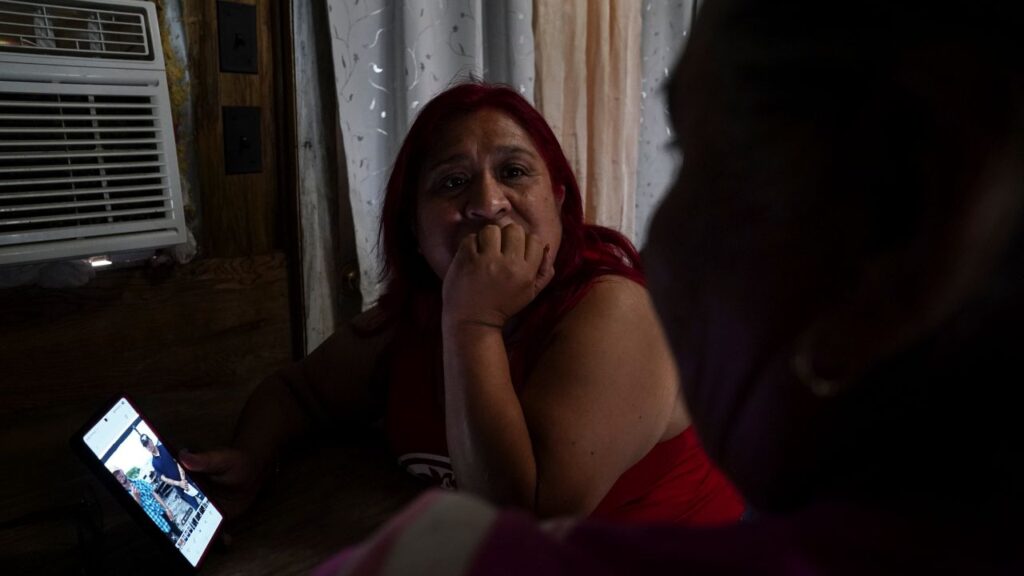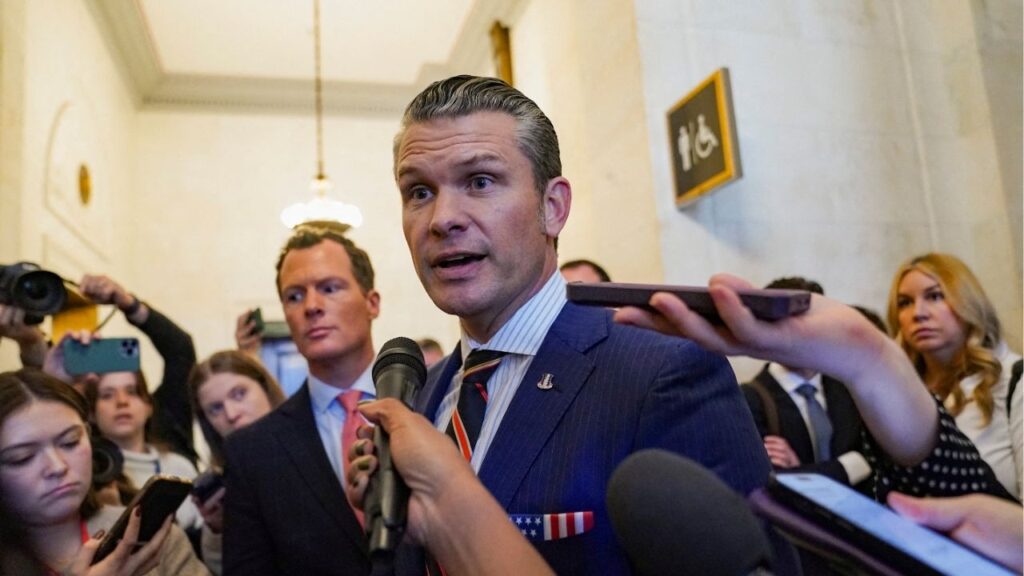President Donald Trump speaks to reporters aboard Air Force One, late on Friday, Oct. 24, 2025. More than two dozen states sued the Trump administration on Tuesday over its recent refusal to fund food stamps during the government shutdown, seeking to spare roughly 42 million people from hunger and financial hardship starting in a matter of days. (Haiyun Jiang/The New York Times)
Share
|
Getting your Trinity Audio player ready...
|
WASHINGTON — More than two dozen states sued the Trump administration Tuesday over its recent refusal to fund food stamps during the government shutdown, seeking to spare roughly 42 million people from hunger and financial hardship starting in a matter of days.
The states, including officials in Arizona, California and Massachusetts, asked a federal judge to force Washington to tap emergency reserve money so families would not see an interruption to their benefits under the Supplemental Nutrition Assistance Program, or SNAP, starting Nov. 1.
Roughly 1 in 8 people in the United States receive food stamps, which average around $187 a month and cost the federal government about $8 billion monthly. Lawmakers must regularly approve money for it, though SNAP maintains a sizable reserve to cover any shortfalls.
Many congressional Democrats and Republicans had encouraged the Trump administration to use this funding to preserve food stamps into November. But the Trump administration declined Friday to extend that reprieve, even though the Agriculture Department said weeks ago that it could reprogram the money to prevent benefit cuts.
In their lawsuit, officials from 25 states and the District of Columbia criticized the Trump administration for its sudden reversal, arguing that the federal government had a legal obligation to maintain food stamps by any means necessary.
States Ask Court to Rule by Friday
The states asked the U.S. District Court for the District of Massachusetts to rule by Friday on a motion that would force the administration to tap the contingency funds to pay SNAP benefits in November. The fund, which is estimated to contain $5 billion to $6 billion, would be enough to provide at least partial payments to roughly 42 million low-income enrollees.
“SNAP is one of our nation’s most effective tools to fight hunger, and the USDA has the money to keep it running,” Letitia James, the Democratic attorney general of New York, said in a statement. “There is no excuse for this administration to abandon families who rely on SNAP, or food stamps, as a lifeline.”
The White House did not respond to a request for comment. The Agriculture Department also did not immediately respond to a request. A banner on the department’s website Tuesday blamed Democrats for the looming interruption to food stamps. “Bottom line, the well has run dry,” the agency said. “At this time, there will be no benefits issued November 01.”
In its earlier memo, viewed by The New York Times, the Agriculture Department said the contingency fund was “not legally available” during the government shutdown. The agency said it could tap the reserve money in limited cases, such as natural disasters. It did not otherwise explain its sudden shift in policy, and it threatened to deny reimbursements to states that try to finance food stamps on their own.
The legal battle over SNAP further evinced President Donald Trump’s political strategy in a shutdown with no clear end. Repeatedly, Trump has stretched the limits of his powers to blunt the impact of the closure, but only for the agencies, programs and workers he sees as central to his political agenda.
President Reprogrammed Billions of Dollars
The president has reprogrammed billions of dollars in federal spending to pay border agents and troops, while seeking to fire thousands of furloughed federal workers. Trump has sourced additional money to assist farmers, a major political constituency, while promising to cut billions of dollars reserved for cities and states led by Democrats.
The Trump administration tapped revenue from tariffs to continue providing benefits under another federal nutrition initiative, known as WIC, which was at risk in the shutdown. But the president and his aides did not pursue the same strategy with food stamps, months after cutting SNAP as part of Republicans’ tax-cut package.
The Trump administration warned states in October about a looming interruption to food stamps, though it said it was exploring backup plans to help families in need.
“We’re going to run out of money in two weeks,” Brooke Rollins, the agriculture secretary, told reporters at the White House this month. “So you’re talking about millions and millions of vulnerable families, of hungry families that are not going to have access to these programs because of this shutdown.”
—
This article originally appeared in The New York Times.
By Tony Romm/Haiyun Jiang
c. 2025 The New York Times Company
RELATED TOPICS:
Categories

Being Latino in the United States Should Not Be a Crime

Israeli Planes Strike Gaza in Test of US-Brokered Ceasefire


















